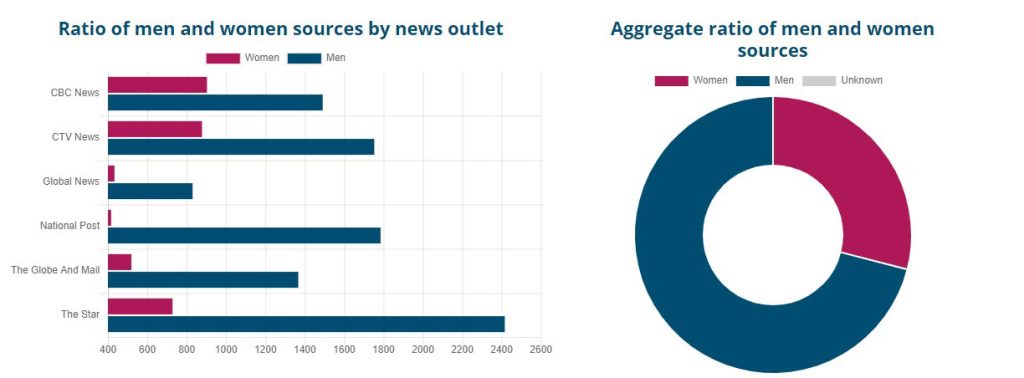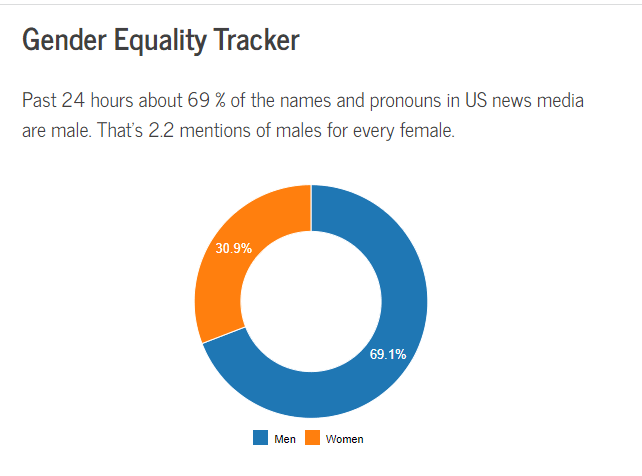During the month of International Women’s Day, La Nacion newspaper in Argentina launched Genie, its Gender Gap Tracker (GGT) based in artificial intelligence (AI) that detects the gender of the people mentioned and/or quoted in the stories produced in their newsroom, with the ultimate goal to promote gender equity in their pieces. This is the first in-house tool of this kind in the Spanish language, following models used in English-language media.
Gender bias in media has become a problem newsrooms intend to tackle in recent years, with multiple initiatives around the globe.
In 2020, Agence France-Press (France), Deutsche Welle (Germany), Nikkei (Japan) and Reach (UK) ran a five-day pilot of the Canadian GGT. They discovered that women represented only 21% of the people mentioned in articles, and about 22% of the sources quoted. Also, the Gender Equality Tracker statistics show that in US media coverage men are mentioned twice as frequently as women.

Informed Opiniones measures the ratio of women to men quoted in online news coverage across seven Canada’s national news media. This information is from March 3 to10
Why is that a problem?
“If the media fails to represent women as equals and stereotypes them in their jobs, societal roles and attributes, they perpetuate and reinforce gender inequalities. This applies not just to women, but to trans people, sexuality, race, class, religion and ethnicity,” according to Women in News (WIN), a project of the World Association of News Publishers (WAN-IFRA). WIN launched its own tracker, also in the English language, a year ago.
In WIN’s Gender Balance Guide for Media it is mentioned that including more female voices even makes business sense. Women make up 50% of the world’s population, and they will be more engaged with the news if they feel represented in them, according to research studies conducted by different outlets, such as the Norwegian media company Amedia and the Financial Times.
As stated in the report, tracking gender balance “is a critical part of achieving gender balance, but it is not the ultimate target. Rather, the data you collect serves as a tool to motivate employees, hold everybody accountable and ultimately ensure any success you make is maintained.”
La Nacion case
The origin of La Nacion’s GGT dates back to 2019 when two journalists of the newspaper participated in a global initiative organized by the London School of Economics (LSE) to explore AI solutions for journalism, the AIJO Project. Along with other reporters, they worked on the implementation of the GGT developed by the Simon Fraser University and the NGO Informed Opinions in Canada. Currently, seven media outlets in Canada use that tool.
In 2021, the Data Journalism team of La Nacion (LN Data) started developing the GGT for internal use only, which was finally launched last week. Collected on a daily basis and displayed in bar graphs, the information can be analyzed with different time frames and gaps by section, among other options.
“We wanted to demonstrate that this could be done in Spanish too, and not only using the technology provided in English,” said Momi Peralta Ramos, head of LN Data.
Through a model based on Natural Language Processing (NLP) – the ability of a computer program to understand human language as it is spoken and written, the GGT is able to identify who is mentioned and quoted in the articles. It uses different databases and applications that associate names with genders, such as Wikidata and the national registry of persons.
With this new tool, La Nacion is following the lead of the BBC, which launched its 50:50 Project in 2020. One of its goals is to achieve gender balance in media reports. The Argentinian newspaper is one of the 145 global partners of the BBC’s project.





